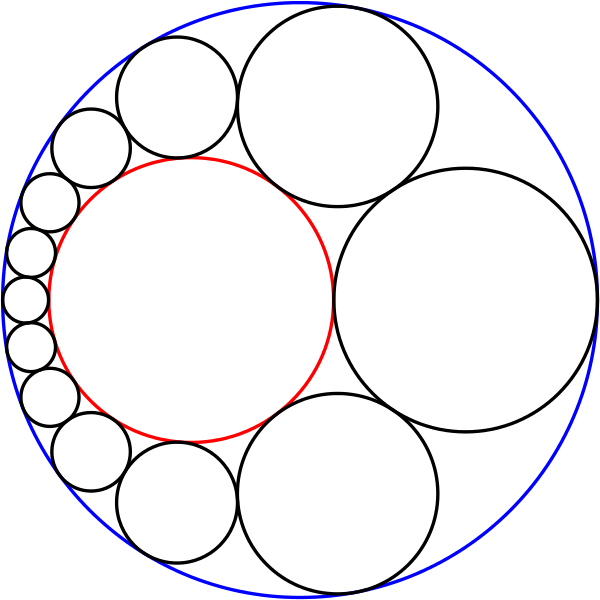Two circles with different radii can also be mapped to two circles with the same radius by an inversion (or a möbius transformation in general). Then the family of tangent circles is easier to describe. Similarly one could send three circles of different radii to three circles of the same radii by an inversion (möbius also in general), as long as the circles are not too far apart from each other (this can be properly formulated).
In general the closest thing to what you are describing seems to me is the solution to the Appolonius problem via the methods of Lie sphere geometry (simply google it and you will find it). The idea is that the set of oriented circles (points being treated as circles of radius zero) lying in the two sphere form a 3 dimensional quadric in $\mathbb{P}(\mathbb{R}^{5,2})$ with a dot product of signature $+++--$. Two oriented circles are tangent when the dot product between their corresponding points in the model is zero (i.e. the vectors representing the points are orthogonal). Then three oriented circles if in general position form three points on the quadric, determining a projective two dimensional plane. The polar projective subspace to that plane with respect to the quadric (which is the orthogonal complement before projectivization) is a projective line. Depending on its signature, the line can intersect the Lie quadric in zero, one or two points, which are the solutions to the Appolonius' problem. Observe that the orientation of the circles is crucial. Möbius geometry is a sub geometry of Lie sphere geometry. I hope this helps.
Edit: Since you asked about the relation between the two nested circles (red and blue) and the number of black circles in the Steiner chain, here is a relation, if I have not made a mistake in my computations:
Let $R$ and $r$ be the radii of the larger circle and the smaller circle inside it respectively. Let $d$ be the distance between the centers of these two circles. Then one gets an $n$ chain that wraps around $m$ times whenever $$ \frac{R(d+r-x)}{(d+r)x-R^2} =\left( \sec\left(\frac{m}{n} \pi\right)+\tan\left(\frac{m}{n} \pi\right)\right)^2,$$
where $x$ is the larger solution of the quadratic equation
$$ (R^2-xd)(x-d)-r^2x=0. $$



